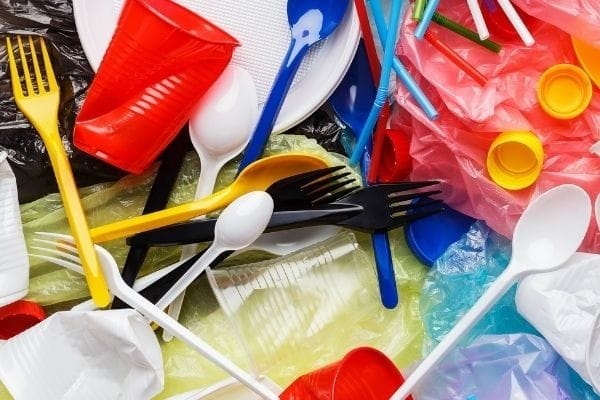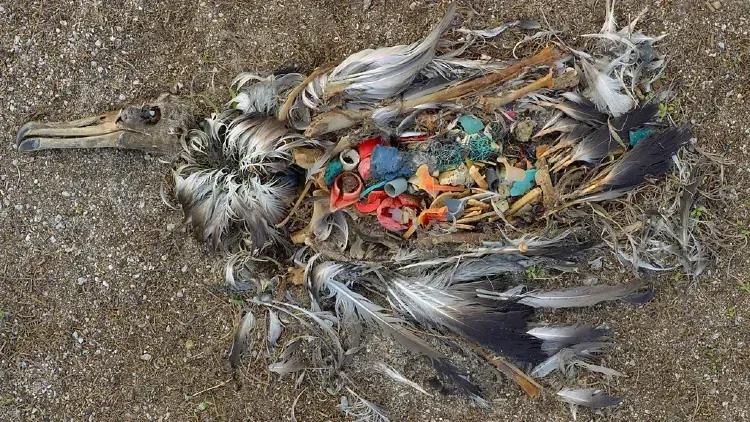Three days ago on December 1, it was announced that what was intended to be the fifth and final meeting of the UN Intergovernmental Negotiating Committee (INC-5), had ended without an agreement being reached. In March 2022, the UN passed a resolution setting the end of 2024 as the target date for the adoption of a finalized, legally binding international treaty on plastics pollution, including marine plastics.
The INC-5 delegation had been charged with defining reduction targets, determining how to regulate hazardous waste and chemicals, and outlining criteria to manage the entire life cycle of plastics, from production to disposal, but as news stations, including NPR, report, the dissenting countries argued that only the waste should be managed, not the production. Although over 100 countries backed the draft created by Panama calling for reducing plastic production to “sustainable levels,” the proposal, which needed unanimous approval, was blocked by a coalition of oil and gas producing countries who wanted to decrease the scope of the agreement.

In light of this failure to come to an agreement, and in light of the possibility that measures in the U.S. to protect the earth may be pulled back under the returning Trump administration, it seems imperative that change begins even without the hoped-for international regulations in place. Perhaps we need to just go ahead and act in ways consistent with what we would have been forced to do if the agreement was reached.
Just because someone can purchase plastic, doesn’t mean they must buy plastic. Even without regulations that require us to find ways for plastic to be reused or recycled well, we can still choose practices that align with those goals. The pressure to change doesn't necessarily have to come from the top; if people band together and use their purchasing power and advocacy to persuade companies to change how they do things, change can also be generated from the bottom. It is, of course, much harder, and requires people to coordinate their efforts with others.
One of the most hard-to-grasp and hard-to-handle realities of plastic pollution is the area of marine pollution. Images of sea turtles caught in plastic bags, an ocean floor covered with plastic, and, of course miles upon miles of garbage caught up in eddies churning in the middle of the ocean, are wrenching and overwhelming.
Chris Jordan, a photographer based in Seattle Washington, has done work that is difficult to walk away from unaffected and unchanged. In particular, his work on Midway Island with the albatross includes visceral images showing the very real affects our habits have on the world around us. His work in this area, along with the work of others, may create impetus for the change we need if enough people are exposed to it and connect it to individual and group practices.
Through his heart-breaking and even gruesome work, Jordan shows what our escalating use of plastic does to creatures who cannot avoid the substance. The plastic that is created for a moment's use (such as straws and take-out containers) lasts as long as 400 years in the environment, breaking down into smaller and smaller pieces, but continuing to create havoc on the ecosystem even in the smallest forms.

One of the most well-known of Chris Jordan's works is his collection of photos showing the contents of bird stomachs after they have died. These photographs were taken on Midway Island, which Jordan first visited in 2008 and then returned to several times over many years as both the beauty and the tragedy of the place grabbed him. He returned, also, to make the film, Albatross, which graphically shows the effects of marine plastic upon the albatrosses that return to the island as adults to mate, nest, and hatch their young on the island before they fly out to sea for years on end.
The island, which is 1,100 miles away from Hawaii, is in the path of the Great Pacific Garbage Patch. It is also a place where millions of albatrosses gather and nest. Albatross parents feed their chicks by skimming the surface of the water with their beaks, scooping up plastic along with the organic material that the chicks require as food. When they return to feed their chicks, the plastic is passed to the chick along with everything else, but the plastic is indigestible to them. With plastic in their stomachs, their stomachs may seem full, even though the chick might be starving from malnutrition.
The situation is a painful one, and Jordan's photographs of the birds' stomachs, opened up so that the contents, including the plastic, are on display, are terrible to see. The film, Albatross, which he made over several years, takes it even further. As he says,
I believe in facing the dark realities of our time—summoning the courage to not turn away, not as an exercise in pain or punishment, or to make us feel bad about ourselves, but because, in this act of witnessing, a doorway opens.
His photography shows not only the gruesome contents of the birds' stomachs, but also show what he discovered after his first visit, a discovery that caused him to return again and again as he created the film Albatross.
When he returned, he saw another side of the albatross—the beauty of these living creatures. In this moody and musical documentary, Jordan's affection for the birds is evident. Through his lens, we see their mating rituals, their first flights, their relationships, their beauty and grace, their births and deaths. When we see the effect of plastics on them, it is harder to watch because we have become acquainted with them. They aren’t just abstract carcasses, but creatures that are intended to have beautiful (and very long!) lives.
You can find a trailer of the movie here:
Or watch the full-length hour and a half long movie for free here.
The photographs and film aim to connect us to the birds through their beauty and their suffering. Watching the young struggling to fly, to breathe, and even dying upon the beach, is especially difficult after having seen the mating rituals, the chick's breakout out of the egg, the baby fluff being replaced by feathers. Although it is difficult, it can also help us see what we need to see and feel so that we are willing to make changes, and perhaps spearhead change that goes beyond just our individual actions. Our goal has to be to both clean up the mess we have already made and to stop making more, which would also eventually find its way into our water and our bodies.
Jordan believes that successfully tackling plastic pollution hinges on rebuilding a strong relationship with nature, that a connection with nature and a raw appreciation for the world around us is what really drives positive change.
It is public awareness of the plastic problem and public pressure and action that have created the movement to enact a plastic pollution treaty; it is increased awareness, pressure, and action that are needed to ensure that we do what is needed to make the world we live in safe for all creatures, including the albatross...and ourselves.
Are there ways you can band with others so that the power of the changes you make is amplified? Perhaps this could be a year in which we make real and significant reductions in the indigestible plastic that fills our bodies and the bodies of other creatures and the world.
Feel free to leave a comment below (you can sign in through your email) or contact me directly at louise.conner@circlewood.online.
Louise